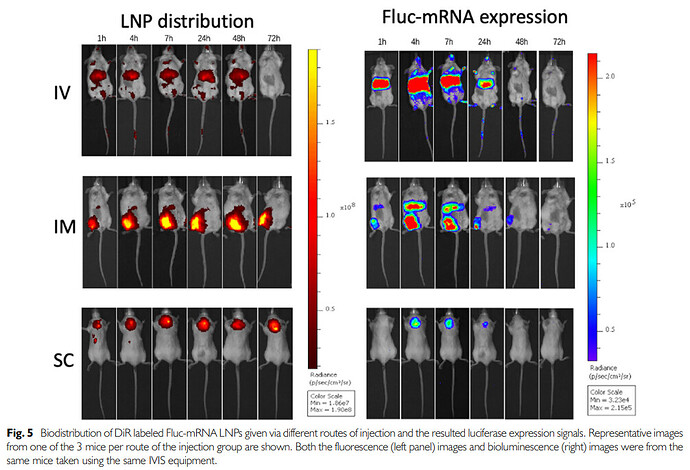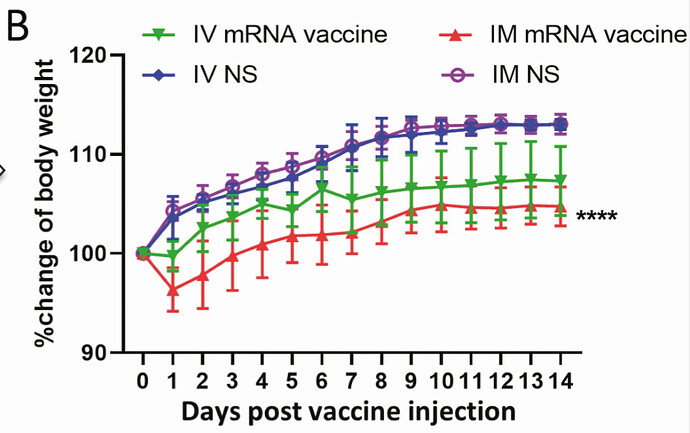Let’s start with the basics. Based on animal experiments, scientists know that the performance of mRNA gene therapy products depends on where the injection goes.
In one study on mice, researchers looked at three different injection methods:
- IV = intravenous, into the vein
- IM = intramuscular, into the muscle
- SC = subcutaneous, into the fat underneath the skin
from Biodistribution and Non-linear Gene Expression of mRNA LNPs Affected by Delivery Route and Particle Size | DOI:10.1007/s11095-022-03166-5
Depending on how it was injected, the LNPs (lipid nanoparticles) will end up in different places, with IV injection causing the LNPs to accumulate mainly in the liver. This likely results in the mRNA gene therapy performing differently. A Hong Kong study found that IV injection tilts the adverse events toward perimyocarditis.
Protecting the public
When it comes to vaccine safety, we should ensure that the delivery method is consistent. If some people are getting IM injection and others getting IV injection, then one of those groups may be getting the injection method that is less safe or less effective. Unfortunately, health authorities are not protecting the public on that front. They should be instructing people to aspirate before injection so that IM injection can be avoided. Unfortunately, that has not happened.
IV injection leads to higher gene expression?
Let’s revisit the image from earlier. The right side of that image shows how much protein was made from the mRNA gene therapy. In this experiment, the mRNA codes for luciferase which is a fluorescent protein - it is ‘glow in the dark’. It’s a protein that is easy to measure so that the researchers can easily figure out how much protein the body is making from the mRNA gene therapy.
In this experiment, it seems to be the case that IV administration leads to the most protein expression.
However, it’s not clear to me if IV administration is actually the least safe administration route.
Hong Kong study suggests that IM injection leads to more weight loss than IV
The Hong Kong study (DOI:10.1093/cid/ciab707) did find that IV injection tilts the response towards perimyocarditis. However, IM injection caused more weight loss in the mice. Look at the red line (IM) versus green line (IV) below:
So I don’t want to prematurely conclude that one method is less safe than the other. It looks like the injection method may tilt the response towards different adverse events… sort of like comparing apples to oranges. More research would help us understand which method is more dangerous because we probably need to look at a number of different side effects.
mRNA safety may be more complicated than we think
Other factors also affect where the LNPs go and how much protein is produced:
- Manufacturing issues affect the performance of the product. Maria Gutschi, my colleague at CCCA, presented on this topic at the NCI.
- Vigorous shaking of the bottle will affect LNP size, which affects where the LNPs go.
- How the product is stored affects the LNPs.
Conclusion
IV administration probably tilts the response towards perimyocarditis. However, it’s too soon to tell if it’s more or less dangerous than IM injection.

